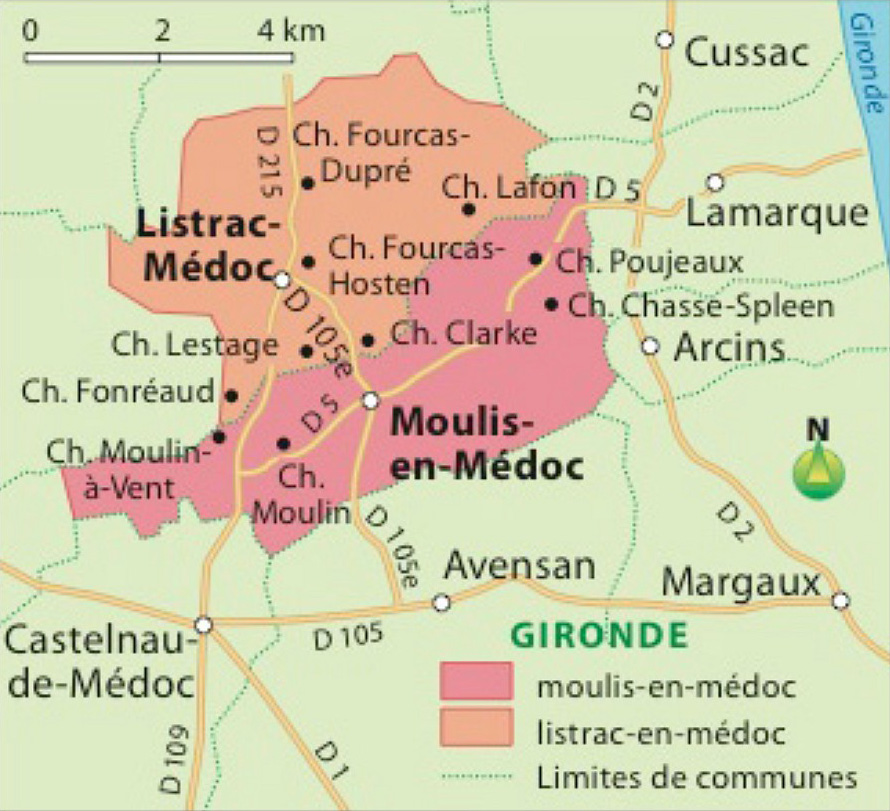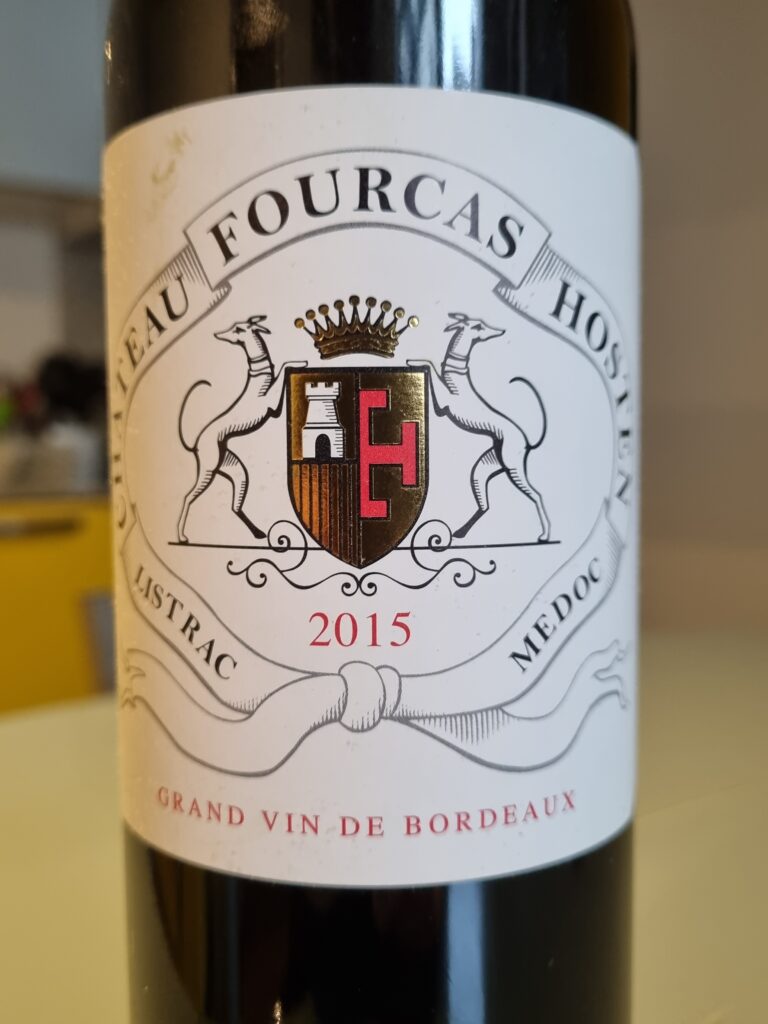
Listrac (pronounced “Lees-trahk) is probably the Médoc communal appellation with the lowest profile, even less so than Moulis. Although the latter is of comparable size (630 hectares vs. 570 for Listrac), it boasts a greater reputation and better-known châteaux.
What makes Listrac unique? For a start, it is the highest point in the Médoc and has a greater proportion of Merlot than its sister appellations. There are twenty châteaux altogether and a cooperative cellar. Listrac wines can hardly be said to have a loyal following and the local wine trade considers them on the rustic side.
The leading châteaux are Clarke, Fourcas Dupré, Fonréaud, and Fourcas Hosten.
Fourcas Hosten has had a number of owners over the years, including the négociants Sichel and a consortium of Americans. The estate was purchased in 2006 by Renaud and Laurent Momméja, scions of the Hermès luxury group. There are 50 hectares of vines: 58% Merlot, 41% Cabernet Sauvignon, and 2% Cabernet Franc. A small quantity of white wine is also made from Sauvignon Blanc and Sauvignon Gris.

I opened a 2015 Fourcas Hosten this past Sunday, uncorking the bottle 4 hours before the meal and decanting it two hours before. I wasn’t expecting anything remarkable, more like a sturdy, perhaps old-school Médoc. I have to say though that this was disappointing. At nine years of age the color was deep and fine. The nose was subdued, with black cherry and more dominant mushroom, forest floor, and truffle notes. But where the wine fell down was on the palate. This started out well enough, but went on to reveal rough, unfriendly, bitter tannin that no amount of ageing will soften.
Of course, I won’t damn this estate because of one unfortunate encounter and I’ll make a point of tasting recent vintages at upcoming Union des Grands Crus tastings. A lot of things can change in nine years. I have had the white Fourcas Hosten, which is fairly rare (7,000 bottles a year). It will make a welcome addition to the Médoc Blanc appellation that is in the works.
